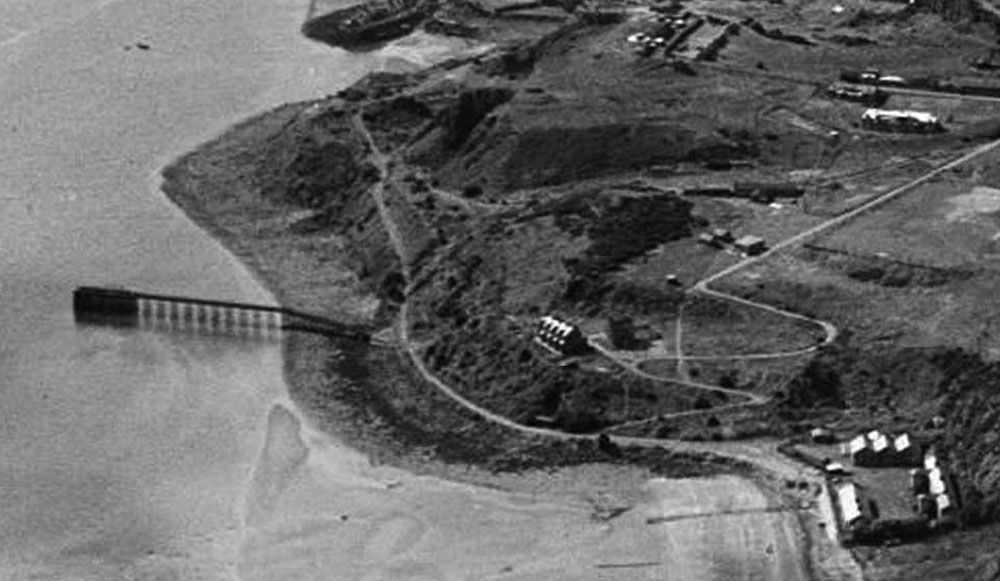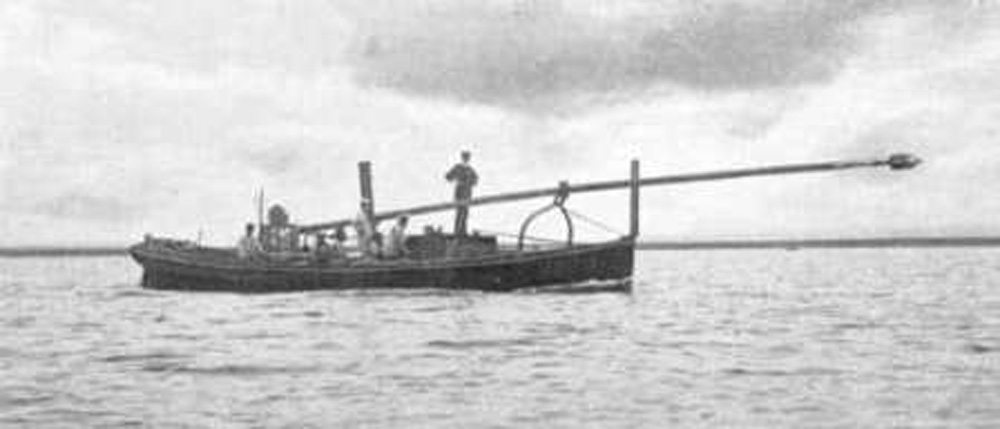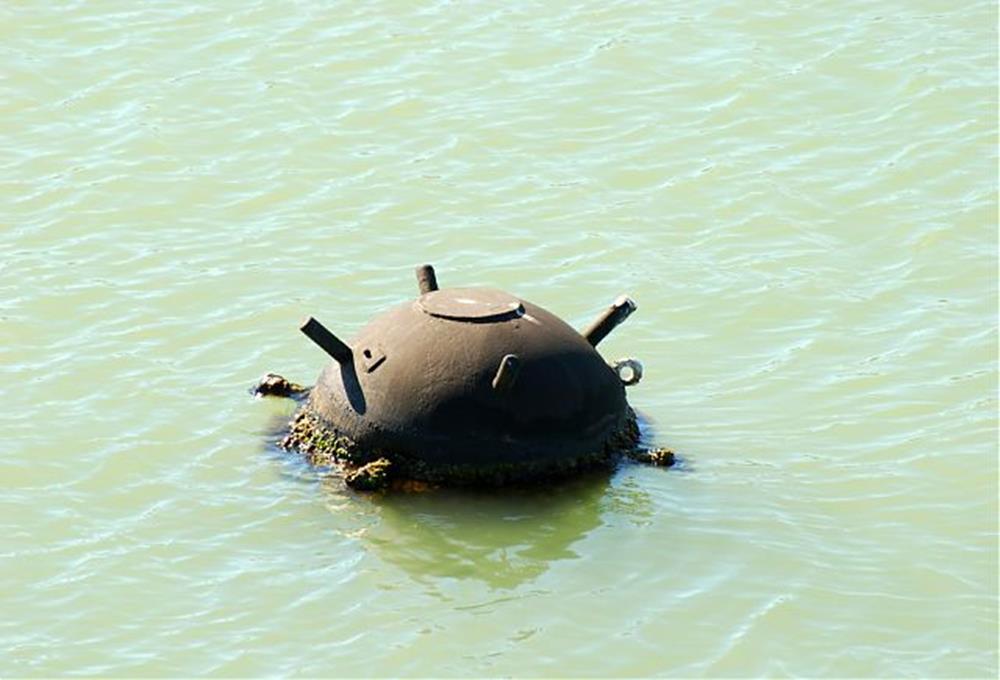Introduction
| < Index | Δ Index | Creation of the service > |
 The Guv’y Pier
The Guv’y Pier
The “Guv’y Pier” is a much-photographed landmark lying just off the coast at Port Laing.
Much photographed, but little understood.
Historic Scotland – catalogues the pier as a category-B listed-building with this description:
Circa 1898-1900. Remains of submarine mining pier. Remnants of concrete substructure to coast; substantial remains of platform pier cut off from land with cast-iron supports and wrought-iron cross-bracing; metal railings to top.
The War Department acquired the land related to this pier in 1898. The pier went on to play an important role in World War I and II Forth Bridge and Rosyth defences. The Carlingnose pier was used for handling mines and is related to the former submarine mining station which had observation and gun posts for controlling and defending the minefield.

Also in close proximity is the scheduled Carlingnose Battery used during the First World War. Map evidence shows a former tramway line which connected the pier to the mining station located at the south end of Port Laing (this site now demolished). The 1913 map also indicates that there were cranes on the platform pier to lift the mines.
A category B listing has been given as this pier exists as a fragment.
All a bit vague – what was a “submarine mining station”?
First of all a “submarine mining station” has nothing to do with submarines, or with coal mining.
A submarine mine is an underwater explosive mine, moored to the sea-bed.
Submarine Mining
The submarine mining service of the British Army operated from 1863 to 1906, as a low-cost and efficient part of the defence of our naval and commercial ports.
The idea of destroying ships by means of sea-borne devices (torpedoes and mines) as opposed to gun-fire dates back to the 16th century. Free-floating drifting mines were deployed by the British Navy against the French Fleet off Rochelle in 1682.
Originally, the term “torpedo” was used for any water-borne explosive device, but by 1870 torpedo came to mean any device that moved through the water – under its own volition, or attached to a spar on a boat.
 A spar-mounted torpedo was attached to the bow of a surface-ship as shown here, or a submarine.
A spar-mounted torpedo was attached to the bow of a surface-ship as shown here, or a submarine.
The spar was lowered from its transport position so that the explosive charge could be rammed against the side of an enemy ship. Spar-mounted torpedoes were used in the 19th century, being widely deployed by the Confederation Army during the American Civil War.
The self-propelled torpedo, launched from a surface-ship, submarine or aeroplane was a later development, perfected by the British engineer Robert Whitehead in 1866.
A “mine” was any device that was either moored in a fixed location, or drifted with the water.
 My mental image of a mine is a big ball covered with horns, bobbing on the sea waiting for an enemy ship to hit one of the horns, triggering a devastating explosion.
My mental image of a mine is a big ball covered with horns, bobbing on the sea waiting for an enemy ship to hit one of the horns, triggering a devastating explosion.
And that indeed is how an offensive mine operates. Laid in the path of enemy shipping it sits passively until triggered by a collision, or by proximity in the case of magnetic mines.
But how can a mine be used as a defensive weapon to safeguard a port? How could it be made to distinguish between enemy and friendly ships? The solution is to have a controllable mine that can be switched on and off. Switched off during the day a defensive minefield allows ships to pass safely overhead, but once switched on – at night, or on spotting an invading force – it forms a protective screen.
And that was the task of a submarine mining station. In the event of a war being imminent, they would deploy the mines; test them to ensure they were correctly connected, replace any that were fired, and control the mines, either firing a mine directly when an enemy ship was overhead its location (an observation system), or arming the whole minefield to be triggered by collision sensors in each mine (a circuit closer system.)
These mines and associated mooring systems and connecting cables were held on shore in store rooms adjacent to the minefield control room. In case of an impending threat, an entire minefield could be deployed in less than 48 hours.
| < Index | Δ Index | Creation of the service > |